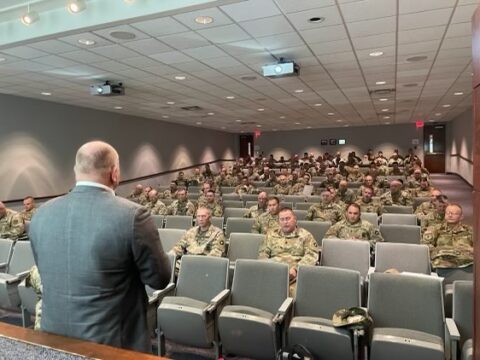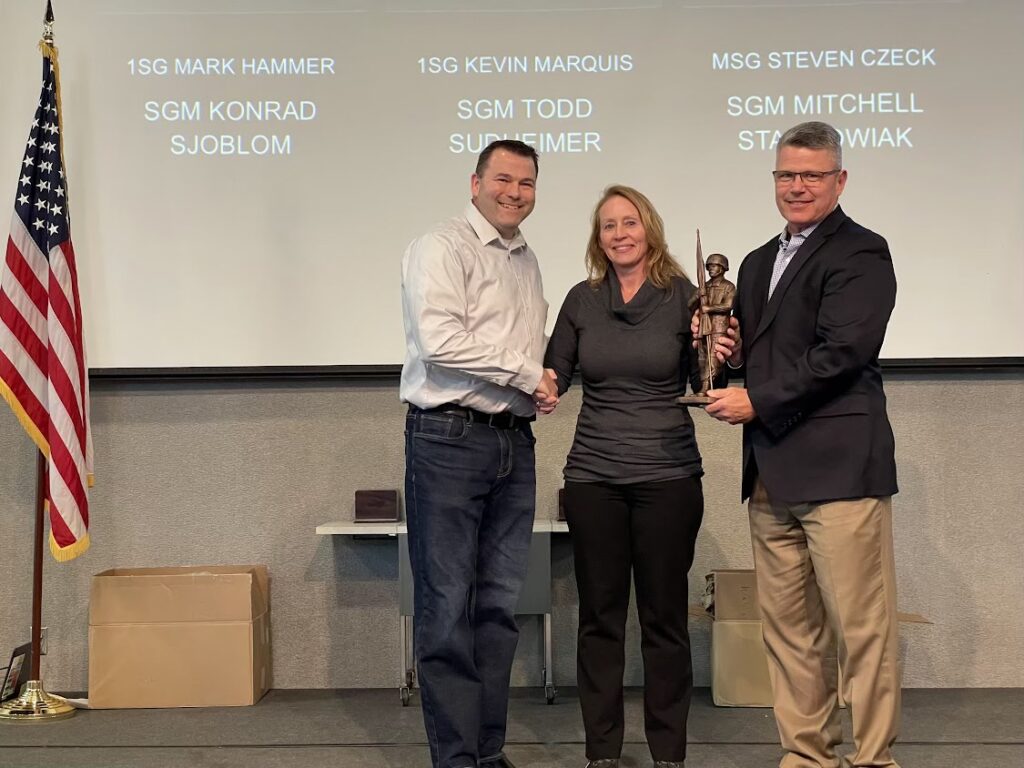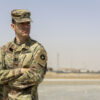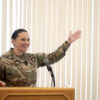Annual conference brings Minnesota’s senior noncommissioned officers together

April 11, 2022 (CAMP RIPLEY, Minn.) – More than 130 Army and Air senior noncommissioned officers gathered to focus on professional development and comradery at Camp Ripley’s Training and Community Center for the 2022 Joint Senior Enlisted Leaders Conference held on April 9-10, 2022. Due to the pandemic, it has been two years since the last in-person conference, and this year’s conference was an opportunity for senior noncommissioned officers from across the state to come together once again.
“This year’s conference is a great opportunity to learn from one another and getting know one another, and that’s what these sessions are all about,” said Command Chief Master Sgt. Mark Legvold, the 133rd Airlift Wing senior enlisted advisor. The conference agenda included sessions covering Minnesota National Guard member benefits and professional development topics ranging from climate and culture, training, career management, and how to lead Gen Z Soldiers and Airmen.
Army Maj. Gen. Shawn Manke, the adjutant general of the Minnesota National Guard, was the keynote speaker. He provided a detailed overview of his organizational priorities of people, modernization, and partnerships and shared some of the organization’s challenges and opportunities. He asked the attendees to help the organization with its strength through improved retention and active recruiting.
“The bucket we fish out of for recruiting is a lot smaller,” said Manke. “The bottom line is it has gotten a lot harder to find qualified people to put in the Guard.”
Understanding unit climate, culture, and younger service members spurred many conversations during the two-day conference. Using an iceberg analogy to articulate the difference, Minnesota’s Command Senior Enlisted Leader, Command Sgt. Maj. Brian Soper clarified, “Culture is the part of the organization that you can’t see and is the hardest to change, and climate is fairly easy. That’s where company commanders and first sergeants, battalion commanders, etc., can have an effect. Changing the culture can take generations.” He used the integration of females into male-dominant military occupational specialties as an example of how long culture change can take.
To affect the climate, yearly, we conduct command climate surveys and use results as a way to understand how we are doing, said Army 1st Sgt. Sandra Johnson of the 204th Area Medical Support Company.
Learning how to communicate with Soldiers and Airmen is always a challenge. The newest Army and Air recruits are from the Gen Z generation. They are more socially aware, more empathetic, concerned for the environment, outspoken, and value diversity. The challenges for today’s leaders require them, “to be adaptable…that we can’t just lead the way we see fit; that we need to understand each generation we are leading,” said Master Sergeant Janna Clifford with the 148th Fighter Wing.
One of the two-day conference highlights was the hail and farewell ceremony. With pandemic restrictions over the past two years, many senior noncommissioned officers had left the organization. This ceremony was an opportunity to bring them back to properly recognize and thank them for their years of service and the positive impact they made on the Minnesota National Guard.
Minnesota National Guard Public Affairs story by Col. Eduardo A. Suárez







